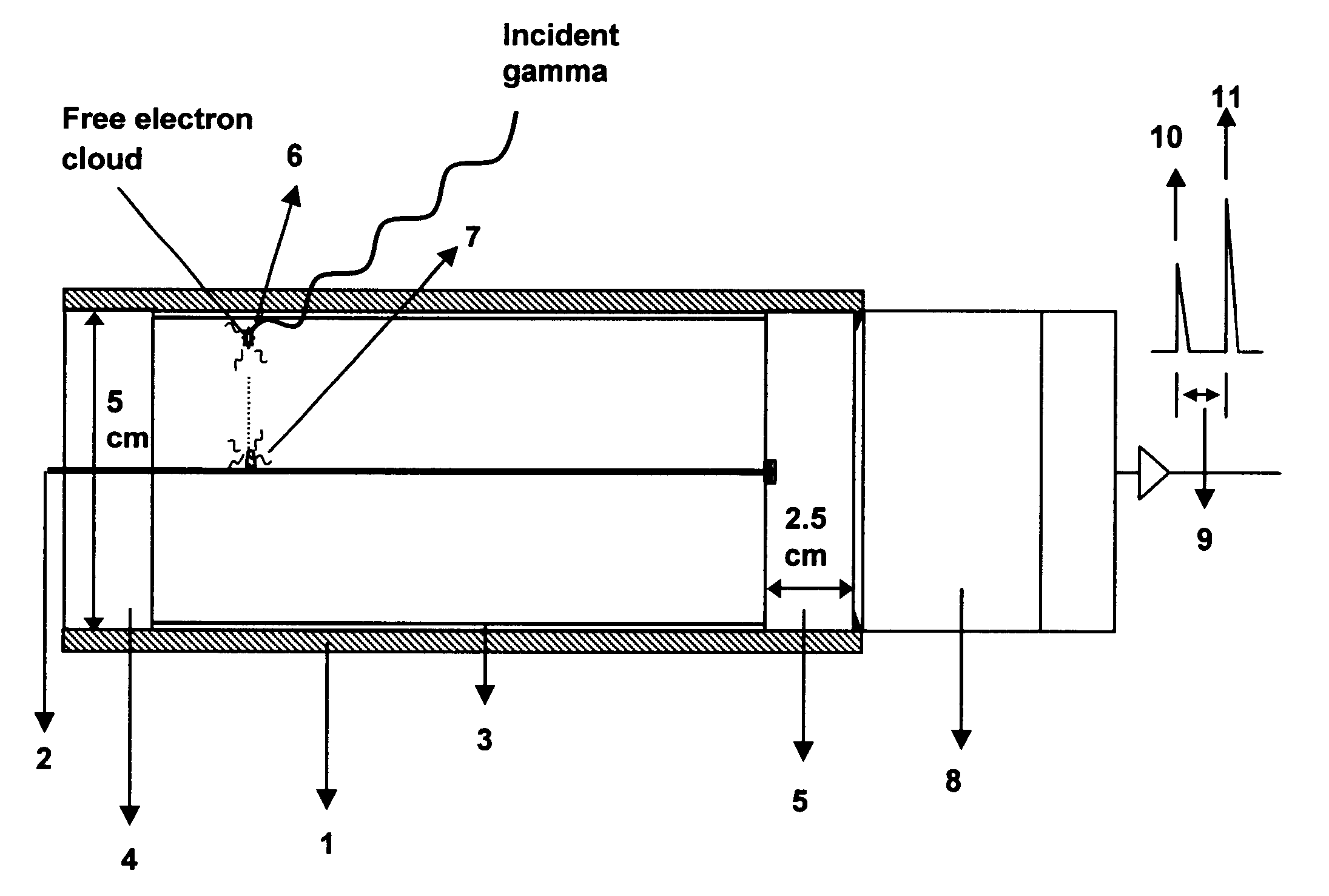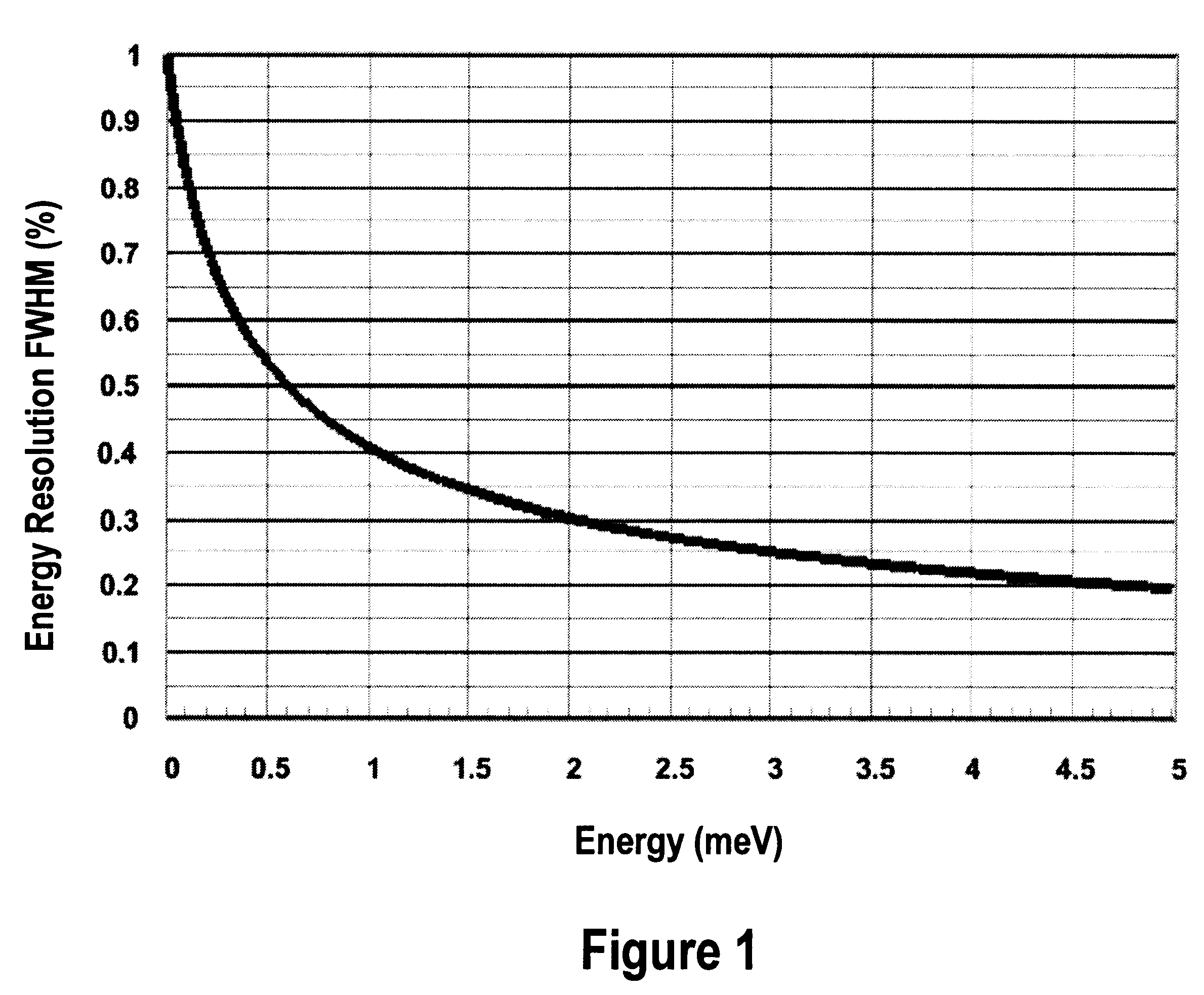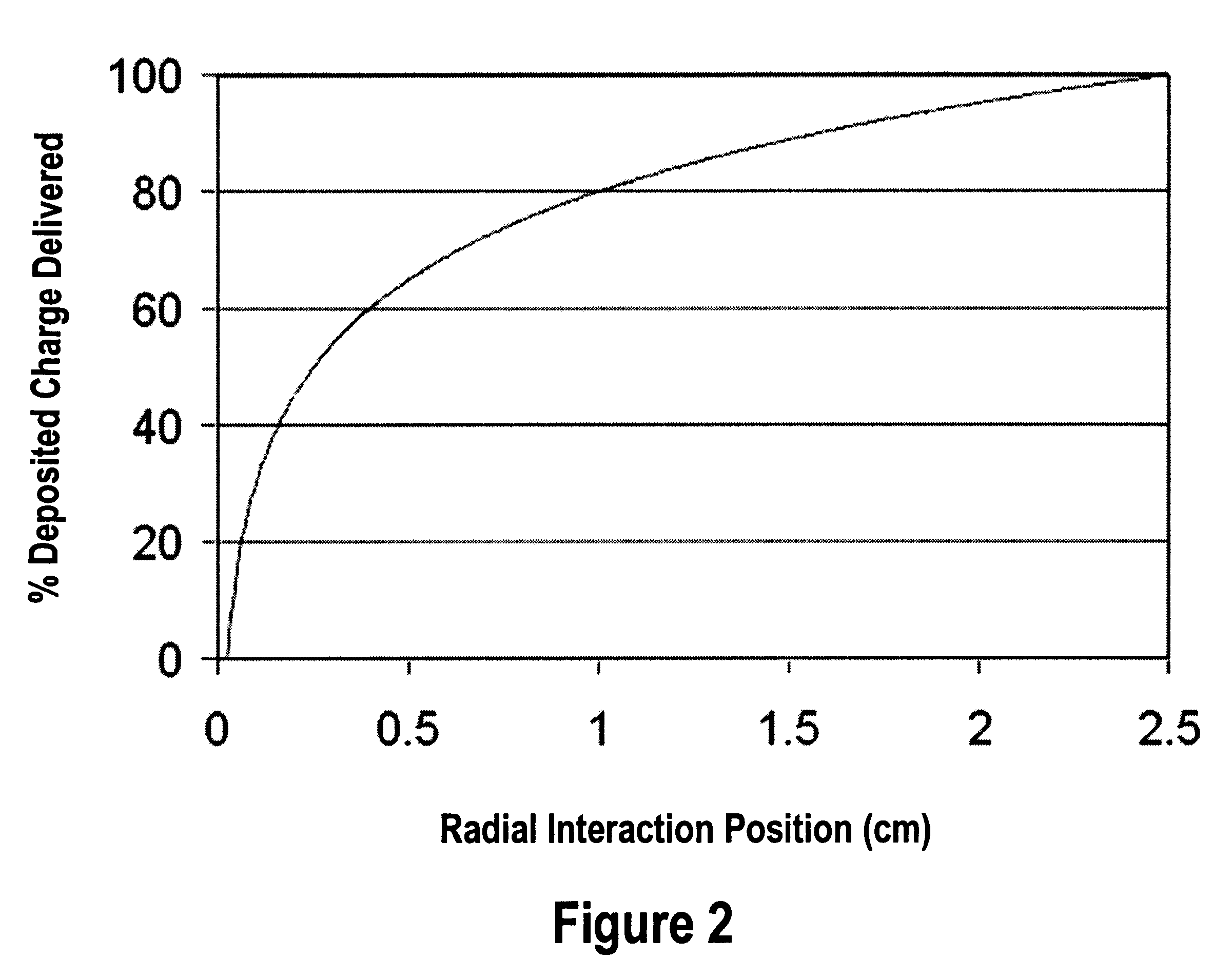High resolution, high pressure xenon gamma ray spectroscopy using primary and stimulated light emission
a gamma ray spectroscopy and high-pressure technology, applied in the direction of x/gamma/cosmic radiation measurement, separation processes, instruments, etc., can solve the problems of inability to achieve high-voltage levels, affecting the energy resolution of such a large hpxe ionization chamber, and affecting the construction of large hpxe parallel-plate ionization chambers
- Summary
- Abstract
- Description
- Claims
- Application Information
AI Technical Summary
Problems solved by technology
Method used
Image
Examples
Embodiment Construction
The use of scintillation light, in a manner as described, has been achieved by constructing a detector with a VUV transmitting end window constructed of MgF.sub.2. An anode wire of 20 gm diameter was affixed in the center of this MgF.sub.2 window crystal by epoxying it into a shallow hole drilled in the inner surface of the window. The wire was then tensioned in the aluminum tube of 4 mm inside diameter and 5 cm length. The tube, serving as the cylindrical conducting cathode electrode, was then filled to a pressure of 48 atmospheres with high-purity xenon and coupled to a quartz window PMT (Electron Tubes #9235) through an inert argon gas space. Tube excitation was produced by a Tc-99m (0.3 .mu.Ci) point source placed near the detector surface. With such a source placed 1 cm from the light transmitting MgF.sub.2 crystal, the phototube output signal was taken at a series of HPXe anode voltages of 0 volts, 800 volts, and 1500 volts. Operation with no collection field (0 volts) demonst...
PUM
 Login to View More
Login to View More Abstract
Description
Claims
Application Information
 Login to View More
Login to View More - R&D
- Intellectual Property
- Life Sciences
- Materials
- Tech Scout
- Unparalleled Data Quality
- Higher Quality Content
- 60% Fewer Hallucinations
Browse by: Latest US Patents, China's latest patents, Technical Efficacy Thesaurus, Application Domain, Technology Topic, Popular Technical Reports.
© 2025 PatSnap. All rights reserved.Legal|Privacy policy|Modern Slavery Act Transparency Statement|Sitemap|About US| Contact US: help@patsnap.com



